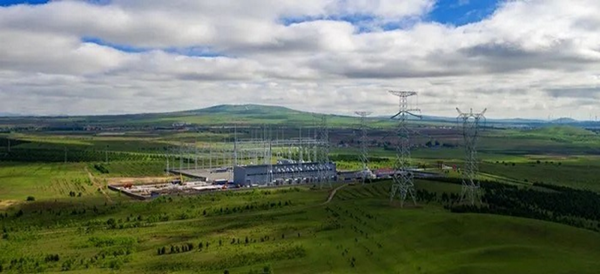Central SOEs Make Big Investment in 5G, UHV Construction
New types of infrastructure construction like high-speed railways, big data centers, artificial intelligence and internet of things, and especially 5G and ultra-high voltage (UHV), have become driving forces for promotion of China's economic growth.
According to a report on China mobile economic development in 2019 by GSMA Intelligence, a global mobile think tank, penetration of Chinese 5G users will reach nearly 50 percent by 2025, the same level as those of such main 5G markets as South Korea, Japan and the United States.
The China Academy of Information and Communications Technology (CAICT) also predicted that investment in 5G network construction by 2025 in China will reach about 1.2 trillion yuan ($169.82 billion). Such construction will also increase investment in upstream and downstream industries to the tune of about 3.5 trillion yuan.
China's three telecommunication operators – China Telecommunications Corporation (China Telecom), China United Network Communications Group Co., Ltd. (China Unicom) and China Mobile Limited (China Mobile), as well as China Tower, recently announced that they will strengthen 5G construction in 2020.
China Mobile started this year's purchase for the second phase main facilities of the 5G wireless network on March 6. The company has built more than 80,000 5G base stations and has 10 million 5G users. The company said it aims to build 300,000 5G base stations to provide prefecture-level cities and above with 5G internet.

Two China Mobile employees work on a 5G base station on top of a building. [Photo/sasac.gov.cn]
On March 10, China Telecom and China Unicom jointly announced that the two companies will begin 5G SA wireless main equipment purchasing for at least 250,000 base stations.
The two companies are also trying to complete construction of 100,000 5G base stations in 47 prefecture-level cities within the first half of this year.
China Tower also said that it will support 5G construction economically and with high efficiency.
By early March, the company had built more than 200,000 5G base stations, many of which were renovated at low cost.
The company also cooperated with other authorities such as railways, the state grid, real estate and municipal traffic departments to formulate and integrate plans for better 5G promotion.
Actually, 5G networks have been used in telemedicine as well as epidemic prevention and control since the outbreak of the COVID-19.
Other high-tech services such as the internet of things, biological recognition, AI, cloud computing and big data are also based on 5G technology.
UHV has evolved into a main demonstration of economic and social development as well as industrial prosperity for any country. It has long industrial chains, a strong driving force in other industries and high economic benefit.
State Grid Corporation of China (State Grid) stressed taking full advantage of the UHV industry and accelerating infrastructure construction on March 11.
According to the company's infrastructure construction department, about 181.1 billion yuan is invested in UHV construction projects annually and the scale of the construction should attract an additional 360 billion yuan of investment, which is a strong power for economic and social development.
Take the ±800 kV North Shaanxi-Hubei UHV direct current (DC) project as an example.
Construction of the project began on Feb 28, and was the company's first UHV project to resume work this year.
With a total investment of 18.5 billion yuan, it is expected to drive equipment manufacturing valued at about 12 billion yuan and more than 70 billion yuan of investment in the power supply industry.
In addition, the project will create more than 40,000 jobs.

The ±800 kV North Shaanxi-Hubei UHV direct current (DC) project was the first of its kind to resume construction of the State Grid this year. [Photo/sasac.gov.cn]
(Executive editor: Wang Ruoting)



